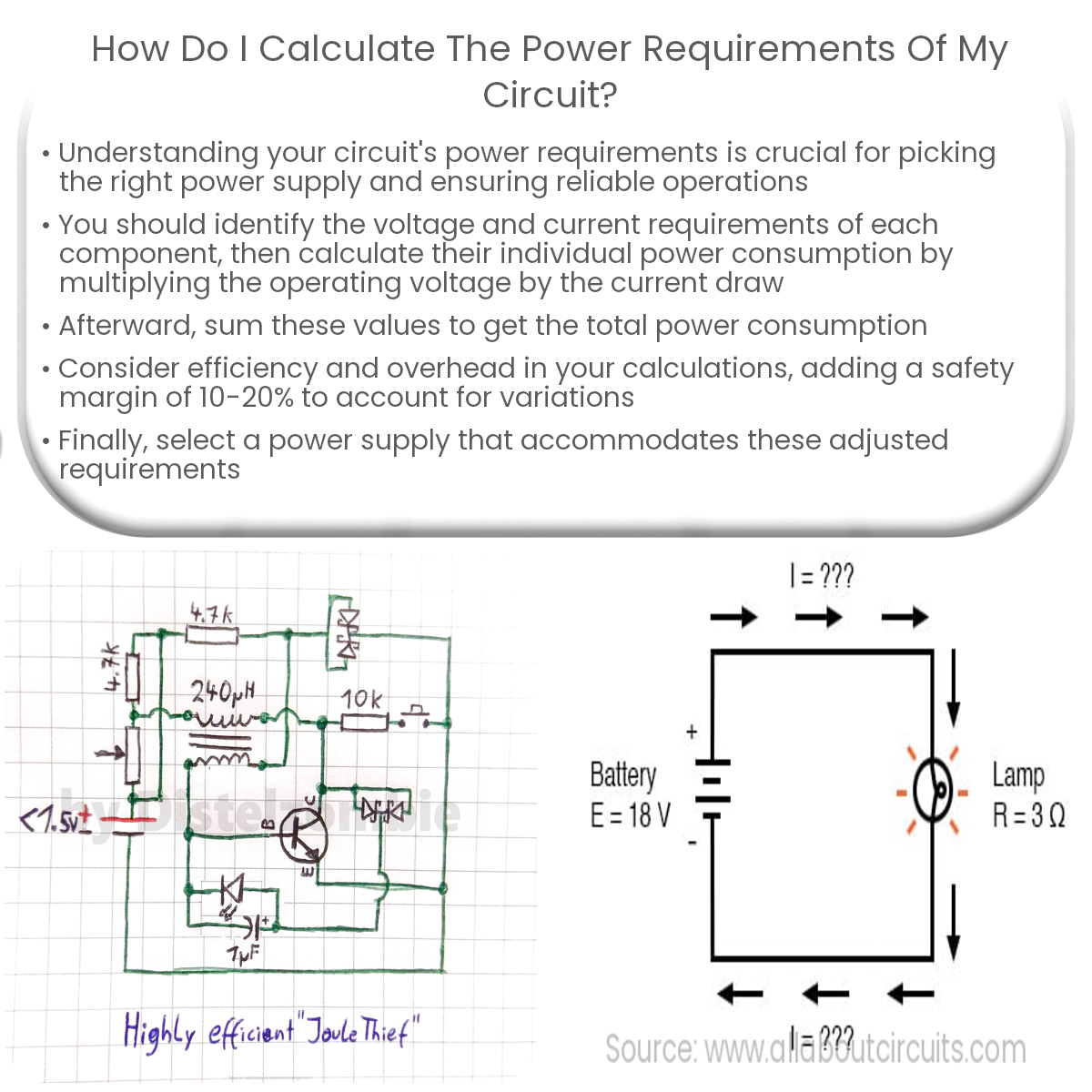Identify component voltage and current, calculate individual power consumption, sum total power, adjust for efficiency and overhead, and choose a power supply.
Calculating Power Requirements of Your Circuit
Understanding the power requirements of your circuit is essential for selecting the right power supply and ensuring the reliable operation of your project. This article will guide you through the process of calculating the power requirements of your circuit.
1. Identify Voltage and Current Requirements
Start by identifying the voltage and current requirements for each component in your circuit. Consult component datasheets, reference designs, or manufacturer recommendations to obtain this information. Take note of the input voltage range, operating voltage, and maximum current draw for each component.
2. Calculate Power Consumption of Individual Components
Calculate the power consumption (in watts) of each component by multiplying its operating voltage by its current draw. For example, if a component requires 5 volts and draws 100 milliamperes (mA) of current, its power consumption would be:
P = V x I = 5V x 0.1A = 0.5W
3. Total Power Consumption
Add the power consumption values for all the components in your circuit to obtain the total power consumption. This sum will provide an estimate of the total power your circuit requires to function properly.
4. Consider Power Efficiency and Overhead
Account for power supply efficiency and overhead when calculating the power requirements. Power supplies are not 100% efficient, and some energy is lost as heat. If your power supply has an efficiency of 85%, for example, divide the total power consumption by the efficiency:
Adjusted Power Consumption = Total Power Consumption / Efficiency
Additionally, include a safety margin of 10-20% to account for variations in component tolerances and potential load changes. This margin will help ensure that your power supply can handle the circuit’s demands under different conditions.
5. Select an Appropriate Power Supply
With the adjusted power consumption value, you can now select a power supply that meets your circuit’s requirements. Choose a power supply with a suitable output voltage, current rating, and power capacity to accommodate the needs of your project.
Conclusion
Calculating the power requirements of your circuit involves identifying voltage and current requirements, determining individual component power consumption, totaling the power consumption, and adjusting for efficiency and overhead. By following these steps, you can ensure that your power supply is adequately sized to support the reliable operation of your electronic project.


